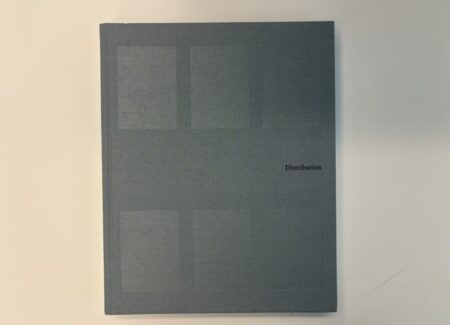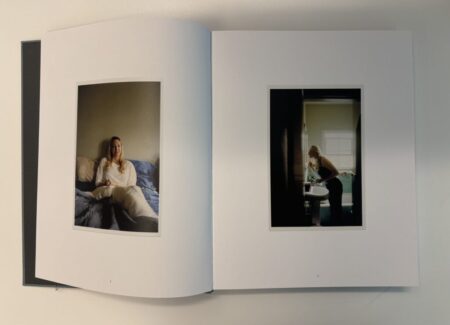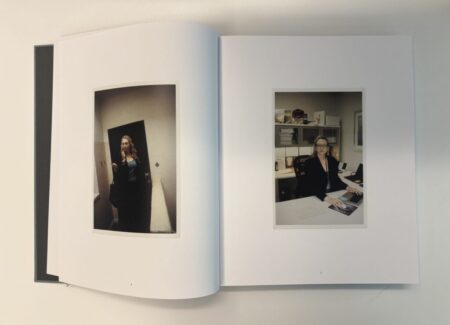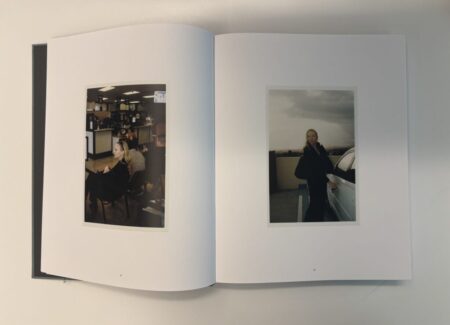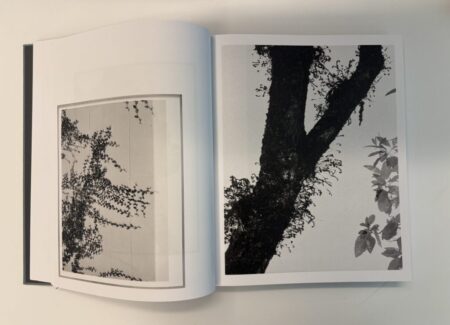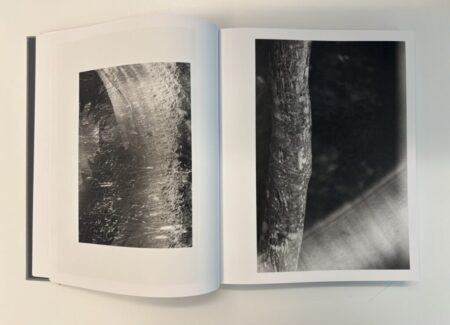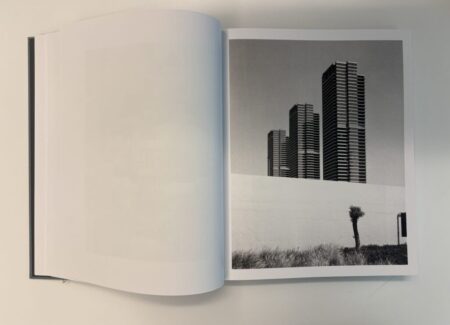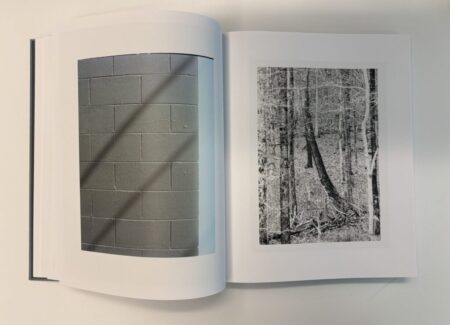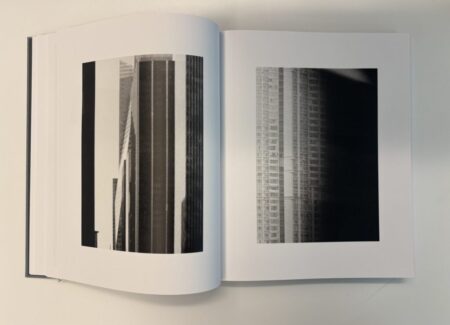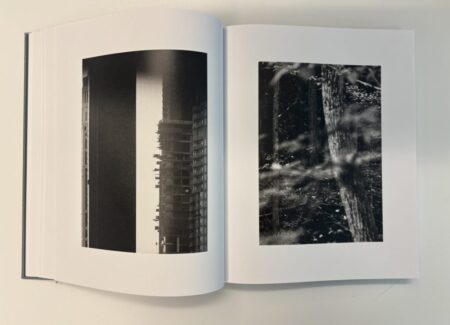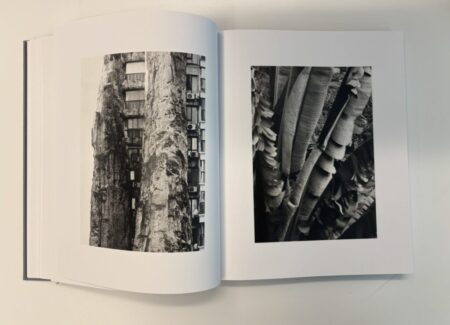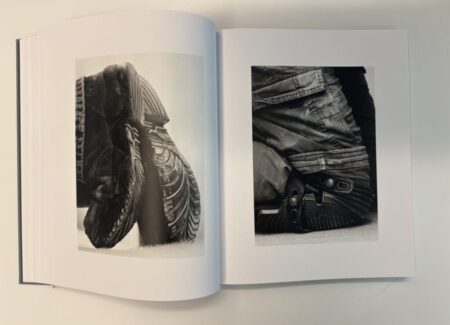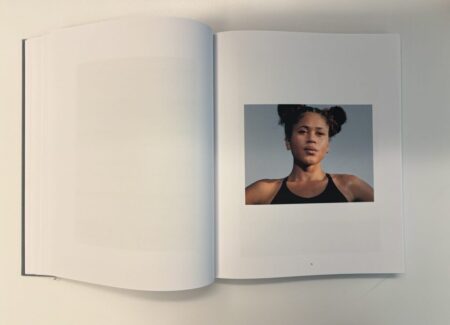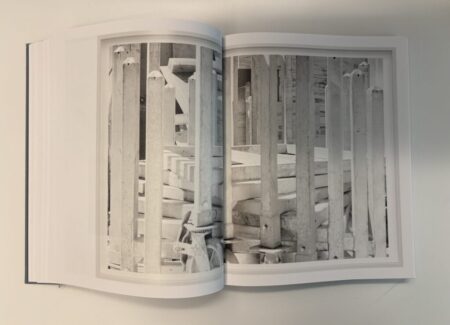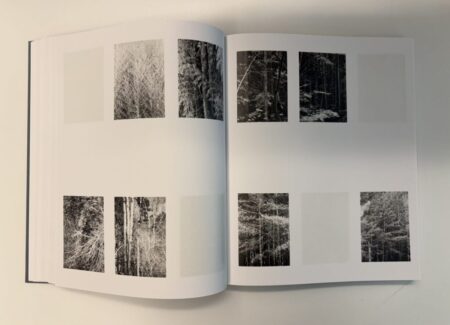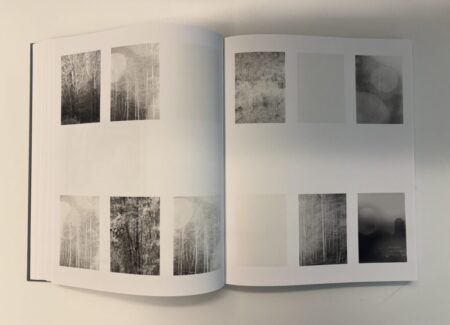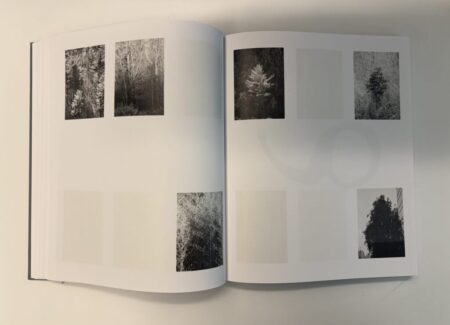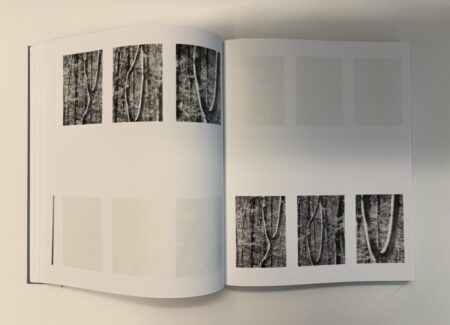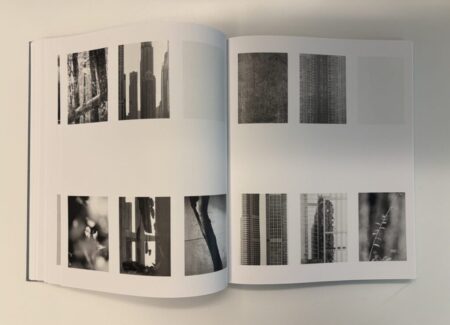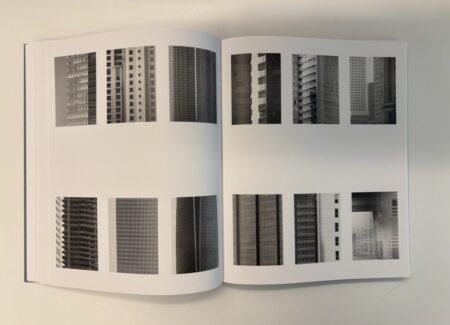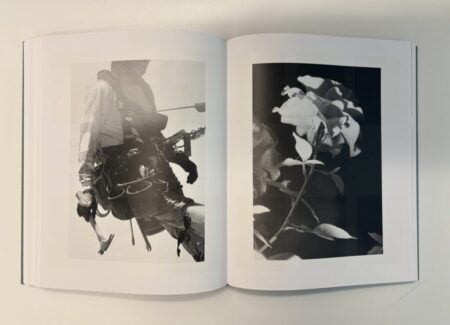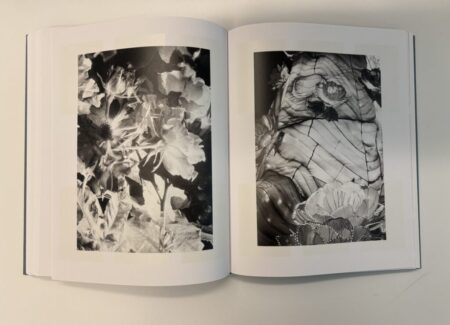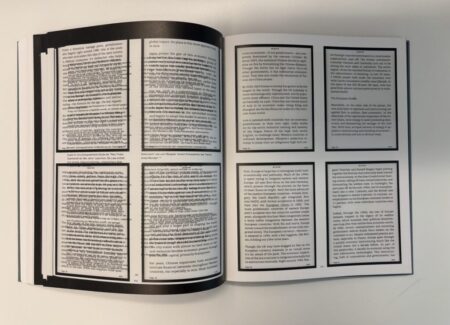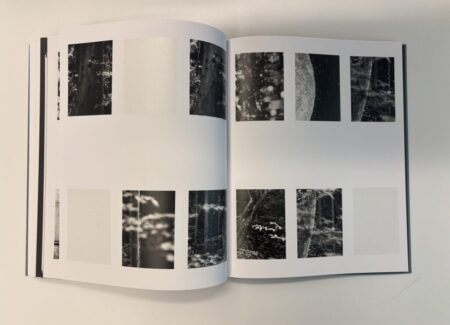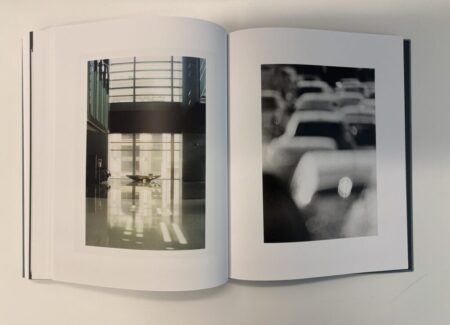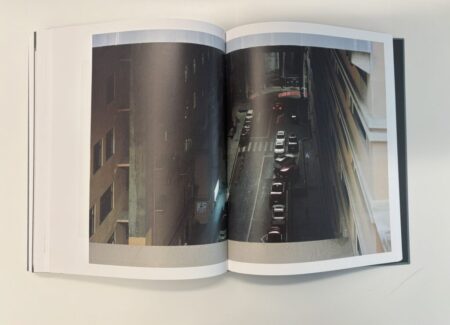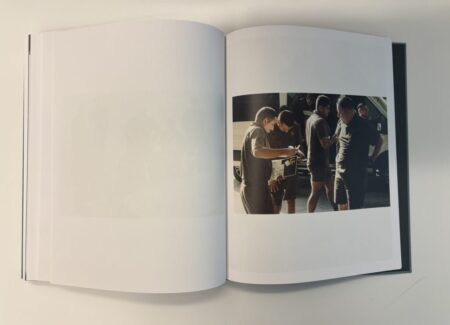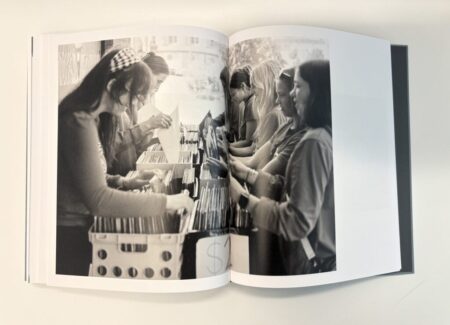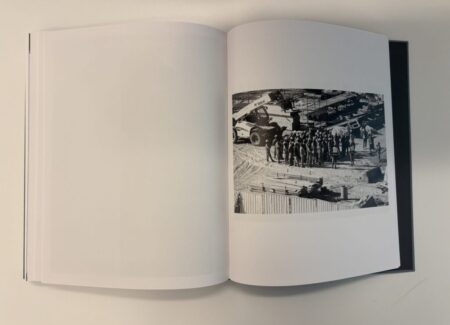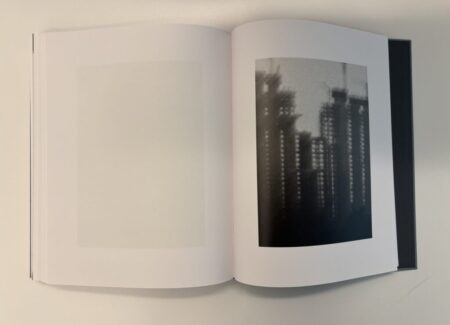JTF (just the facts): Published in 2025 by MACK Books (here). Hardcover (21.5 x 27 cm), 392 pages, with roughly 300 color and black-and-white photographs. Includes a short story by Catherine Lacey. (Cover and spread shots below.)
Comments/Context: Daniel Shea is a New York-based artist whose practice seamlessly blends photography, sculpture, and installation. Alongside a thriving career as a commercial photographer, Shea consistently pursues personal projects that showcase his distinctive visual language and artistic sensibility. His earlier photobook 43-35 10th Street (reviewed here), examined, in a clever and complex manner, the ambiguities and politics of urban development in Long Island City, a neighborhood in New York.
Shea’s new photobook titled Distribution is one of remarkable ambition and conceptual rigor. It unfolds as a sprawling visual essay that begins with a deceptively straightforward question: how does one photograph a forest? What initially appears to be an ecological inquiry quickly expands into a meditation on systems (natural, social, economic, etc.) and the visual strategies used to comprehend them. In this sense, Distribution is not merely a book of photographs; it is a study in perception, a cartography of entanglements, and a quiet critique of the limits of representation.
The title, Distribution, is clever. It refers not only to the dispersal of goods and people (a nod to the logistics networks that underpin modern life) but also to the distribution of attention, meaning, and photographic focus. The title is elegantly embossed on its linen cover, along with a grid of vertical rectangles mimicking the grids of images inside. There are no captions or explanatory texts, a choice that reinforces the book’s open-endedness. Instead, the viewer is invited to draw connections, to find coherence in the midst of visual noise.
The opening sequence depicts a day in one woman’s life. Through this composite portrait, we see her waking up, going through her morning bathroom routine, working in an office, shopping, exercising, etc. Her name is Jessica and she was selected for embodying the statistical median American. Is this an example of a comfortable middle-class life or a glimpse into a deeply unsettling dystopian reality? Her presence is unexpected, yet it grounds the book’s beginning before it drifts into abstraction – textures, structures, nature, and eventually once again, people.
During the pandemic, Shea began photographing forests in various locations, including Queens (in New York), North Carolina, Mexico, California, and Japan. Yet in the book, these places remain intentionally unnamed, as specificity was not the point. In their accumulation, the images coalesce into a generic woodland, stripped of geographic identity. Shea then applied the visual language of photographing trees to new photos of architecture in cities. Unable to photograph on the streets of Dubai without being stopped, he began shooting from a moving car, a method he later extended to all the other locations in the project. These photographs are gridded in the middle of the book, and are at the heart of the project.
The sequencing is deliberate and fluid, resisting linearity in favor of accumulation and drift. Images echo and rhyme across spreads, forming visual motifs that reward close reading. What emerges is a tension between saturation and clarity. Shea’s photographs are dense with information. There are patterns, textures, and architectural fragments, but they rarely offer resolution, instead encouraging us to linger in the ambiguity, to consider what lies just beyond the frame. This is particularly evident in his treatment of the built environment: overpasses, scaffolding, and facades appear not as subjects in themselves, but as indicators of larger, unseen systems. The cumulative effect is disorienting, like trying to map a city by its shadows.
Near the end of the book, a sequence depicts various groups of people: people playing in a stadium, shoppers strolling through a mall, a team of UPS delivery workers, young women browsing vinyl records in a store, construction workers on site, and flight crews walking through an airport. These images may symbolize individuals who occupy and operate within the machinery of contemporary systems – economic, social and logistical.
A short story “Congratulations on Your Loss” by Catherine Lacey, placed at the very end, focuses on a woman named Enid, who finds herself trapped in a Kafkaesque situation, when facial recognition cameras repeatedly misidentify her and she keeps getting unjust jaywalking fines. The story is interwoven into the book, offering a literary counterpoint to the visual material. Lacey’s prose, elliptical and atmospheric, mirrors the book’s themes of fragmentation and dispersal. Her inclusion is not ornamental; rather, it deepens the book’s conceptual framework, reminding us that narrative (just like photography) is always a matter of selection and framing.
The audience for Distribution is undoubtedly those who engage in active reading and who are intrigued by unconventional narrative structures. What makes the book compelling is its refusal to offer easy answers. It is a book that demands time and attention. In an era of algorithmic feeds and visual overload, Shea’s work is a reminder of the value of slowness, of looking closely and thinking deeply. It is a photobook that does not merely document the world, but interrogates the ways in which we come to know it. By thoughtfully integrating both content and form, Shea has made an intelligent project that translates seamlessly into a photobook object.
Collector’s POV: Daniel Shea is represented by Mini Title in New York and London (here). His work has not yet found its way to the secondary markets, so gallery retail likely remains the best option for those collectors interested in following up.
